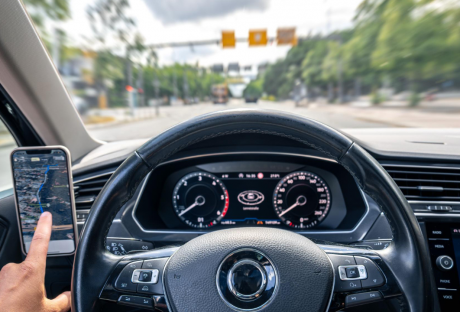India has come a long way from fighting COVID-19 to rising above it. However, just after the lockdown was lifted and companies start urging employees to return to the workplace, a concern remains: who would protect employees against COVID-19 at the workplace? That is why COVID-19 coverage under group health insurance policy.
Before the pandemic, companies often purchased group health insurance without this coverage; however, COVID-19 changed everything. Thus, it becomes crucial to understand the exact benefits of this coverage for employees and organisations.
COVID-19 Coverage Under Insurance Policy
COVID-19 is a communicable disease that spreads through air and human contact. Although the spread of COVID-19 is now containing and people are more aware of precautionary measures, the disease has not eradicating.
That is why, to safeguard the welfare of employees who are most exposed to COVID-19, the Insurance Regulatory and Development Authority of India (IRDAI) made it mandatory for every organisation to provide COVID-19 coverage under their group health insurance policy.
Benefits Of COVID-19 Coverage Under Insurance Policy
Here are some of the benefits of COVID-19 coverage under the group health insurance that employees can take advantage of.
- IRDAI Mandatory
As per the orders from the Insurance Regulatory and Development Authority of India (IRDAI), it has been made mandatory to provide COVID-19 coverage to every employee of an organisation. Without this coverage, companies are not allowed to start their in-office operations.
- Medical Expense Coverage
Under the group health insurance policy, employees are covered for medical expenses relating to COVID-19. It means that all financial expenses incurred, from diagnostics to treatment and medicines, will be covered by the policy.
- Employee Dependent Coverage
Several group health insurance policies extend their coverage to employees’ dependents; the same applies to COVID-19 coverage. The policy provides COVID-19 coverage to the employee’s spouse, children, and dependent parents.
- Provides A Sense Of Security
COVID-19 is a life-threatening disease, and providing coverage for this disease gives employees a sense of security. They feel safe and secure coming to the office premises to do their work.
- Employee Loyalty
When employers buy medical insurance for their employees, they establish a good rapport and loyalty in their minds. This loyalty reflects in the work of employees and the productivity of their outputs.
Inclusions And Exclusions Of Coverage
When we refer to health insurance for COVID-19 coverage under insurance policy, we need to know what’s covered and what’s not.
It is always best to know this in advance to avoid unpleasant surprises at the time of a health emergency and ensure that you make the most of your policy benefits.
Just like any other medical insurance policy, the COVID-19 cover also has some inclusions (what is included) and exclusions (what is excluded).
Let me break these down to you in detail so that you have a crystal clear understanding well in advance, even before you make a claim.
Inclusions
The inclusions detail all the medical expenses and services you’ll cover for with your COVID-19 cover. The following is what you can generally expect:
Pre And Post-Hospitalisation Cover – The COVID-19 cover provides coverage for expenses incurred during pre- and post-hospitalisation treatment. It includes expenses such as diagnosis, doctor’s appointments, and medicines.
- Pre-Hospitalisation: The costs of medical examinations, specialist visits, COVID-19 tests, and medication before hospital admission are eligible. For example, if you had to undergo blood exams, a PCR exam, or a CT scan to confirm the infection, the cost would be eligible.
- Post-Hospitalisation: You can be ill for a few days, and you will require follow-up consultations, medication, or physiotherapy. These are also covering for a few days after discharge (likely 30 to 60 days).
Second Opinion – The COVID-19 coverage under the group health insurance policy also provides coverage for expenses related to a second medical opinion. For example, if you are not satisfied with the diagnosis from your first doctor’s visit, you can always seek a second medical opinion without worrying about finances.
- You may consult with another physician or specialist to confirm your treatment regimen.
- The cost of this consultation, either face-to-face or by telemedicine, is paid for.
Daycare Treatment Cover – The group health insurance policy also provides coverage for expenses incurred during COVID-19 daycare procedures.
- Even some antiviral drugs, oxygen therapy, or even other minor procedures associated with COVID can be done without overnight admission.
- Your group health insurance cover for COVID-19 pays for these charges just the same way it would pay for inpatient care.
Ambulance Cover – In case you need ambulance services from your resident to the hospital or from one hospital to another recommended hospital, then the COVID-19 coverage will also cover its cost.
Exclusions
While the cover is extensive, there are certain conditions and medical costs that are not included. Understanding these exclusions allows you to have realistic expectations and avoid claims rejection.
- Pre-Existing Diseases – The COVID-19 coverage under the group health insurance policy is limited to treatment for coronavirus disease 2019 (COVID-19). If the insured is suffering from a pre-existing illness, there will be no coverage for treatment of that illness.
- Maternity Or Newborn Cover – There is no coverage for maternity or newborn treatment under the COVID-19 cover of the group health insurance policy.
- Waiting Period – Several health insurance policies have a waiting period; similarly, there is a 30-day waiting period for getting coverage under COVID-19. Thus, if you make any claim before the waiting period, you will not get a claim.
Summing Up
The COVID-19 pandemic has changed the way the entire medical and insurance field operates.
Before the pandemic, group health insurance policies typically provided coverage for most medical emergencies; however, with the addition of COVID-19 coverage under insurance policies, the policies have become more comprehensive.
As employees, one must check for this coverage in their group health insurance policy. Employers have the responsibility to find a trusted insurer, such as TATA AIG, which includes this coverage in their group health insurance, to comply with the IRDAI orders.
Moreover, organisations can buy business insurance online, such as fire and burglary, marine, and workers’ compensation, to safeguard their other assets.






















